The Title Says It All...MAKING Video Games...FOR NASA! :)
The title says it all...MAKING Video Games...FOR NASA! :)
More Posts from Bigbluenasa and Others

The Andromeda Galaxy is 2 million light years away from us so what we see now is how it appeared 2 million years ago. It will collide with our Milky Way in 2 billions years from now. The two galaxies are heading towards each other at a rate of 430 km/hr. A billion years from now Andromeda will loom as a spectacular site, eventually swelling to fill half of the night sky.
Ever been wowed by a NASA science visualization? Learn about their creation from NASA technical artist Kel Elkins. @NASAEPDC
How Well Do you Know Neptune?

Dark, cold and whipped by supersonic winds, Neptune is the last of the hydrogen and helium gas giants in our solar system. More than 30 times as far from the sun as Earth, the planet takes almost 165 Earth years to orbit our sun! In fact, in 2011, Neptune completed its first orbit since its discovery in 1846.

Here are a few things you might not know about the windiest planet:
If the sun were as tell as a typical front door, the Earth would be the size of a nickel and Neptune would be about as big as a baseball.
Neptune orbits our sun, a star. Neptune is the eighth planet from the sun at a distance of about 4.5 billion km (2.8 billion miles) or 30.07 AU.
One day on Neptune takes about 16 hours (the time it takes for Neptune to rotate or spin once)
Neptune makes a complete orbit around the sun (a year in Neptunian time) in about 165 Earth years (60,190 Earth days)
Neptune has six rings
Voyager 2 is the only spacecraft to have visited Neptune
Neptune has 13 moons. They are named after various sea gods and nymphs in Greek mythology
Did you know that Neptune has storms?

Similar to Jupiter, Neptune has storms that create gigantic spots in its atmosphere…well, it did. When Voyager 2 flew past Neptune in 1989, it tracked and imaged the “Great Dark Spot” — a storm larger than the entire Earth! When the Hubble Space Telescope imaged Neptune the spot had disappeared, only to be replaced with two smaller storms, which in turn also disappeared.
Make sure to follow us on Tumblr for your regular dose of space: http://nasa.tumblr.com

Orion Nebula in Oxygen, Hydrogen, and Sulfur Image Credit Copyright: César Blanco González
The Orion Nebula is among the most intensely studied celestial features.The nebula has revealed much about the process of how stars and planetary systems are formed from collapsing clouds of gas and dust.
Astronomers have directly observed protoplanetary disks, brown dwarfs, intense and turbulent motions of the gas, and the photo-ionizing effects of massive nearby stars in the nebula.
What’s Up for April 2016?
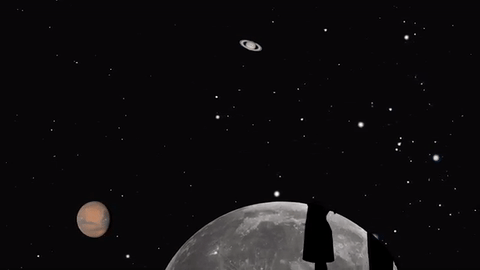
Jupiter, Mars, the Lyrid meteor shower and 2016’s best views of Mercury are all visible in the sky this month.
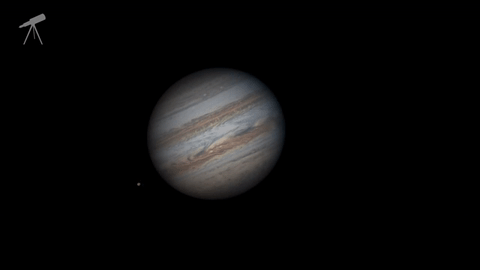
Jupiter, where our Juno mission will begin orbiting on July 4, continues to shine almost as brightly this month as last. And eagle-eyed telescope viewers will see a transit, a shadow transit, an occultation and an eclipse of Jupiter’s moons- all in one night: April 6-7.
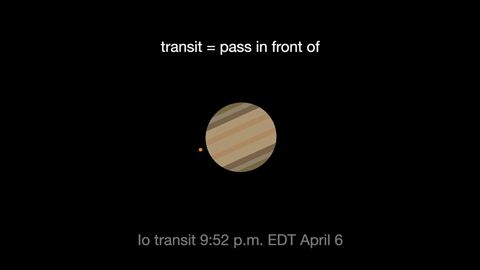
Io transits first, crossing the planet beginning at 9:52 p.m. EDT. It’s shadow can be seen less than an hour later.
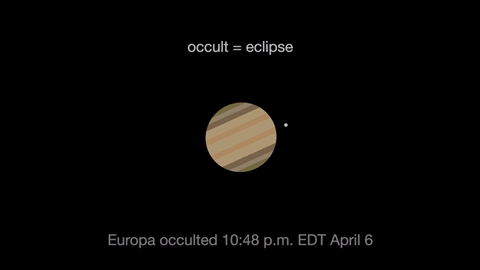
Next Jupiter occults, or eclipses, Europa as Europa slips behind the giant planet at 10:48 p.m. EDT. At 3 a.m. Europa reappears from its eclipse, dramatically leaving the shadow of Jupiter.
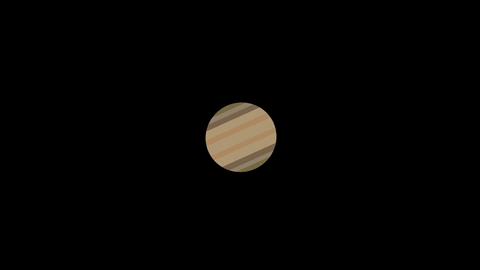
Ganymede transits the planet beginning at 1:01 EDT April 7.
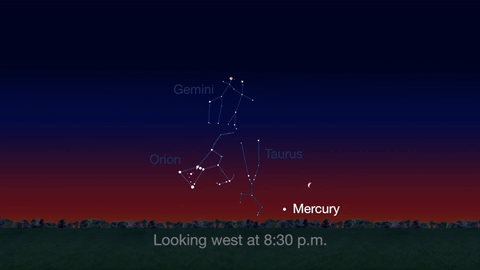
Check out the other planets in April, too! Mercury is always a challenging object to view, but this month you can spot it after sunset about 10 degrees above the horizon. Through a telescope you can see its phase. It will appear like a tiny crescent moon, with about 1/3 of its disk illuminated.
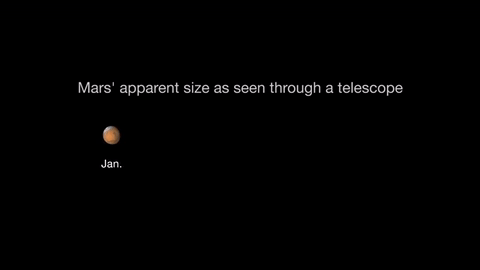
Mars is finally visible before midnight this month. It rises in the southeast at about 10 p.m. by the end of April. The best observing of Mars will be when it is highest in the sky. This means a few hours before dawn. Its brightness and apparent size increase dramatically this month. By month’s end, Mars appears nearly twice as bright as at the beginning of the month.
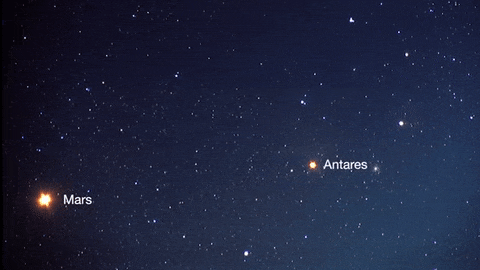
About mid-month you’ll see Mars near its rival in the sky: the similar-colored red supergiant star Antares. The name “Antares” means “equal to or rival of Mars”.
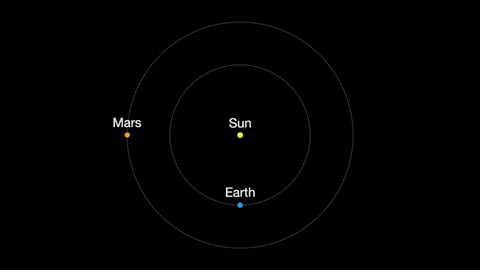
Earth moves almost twice as fast as Mars does, so it often passes Mars in their race around the sun. This causes “retrograde motion”: an illusion we see from our viewpoint on Earth.
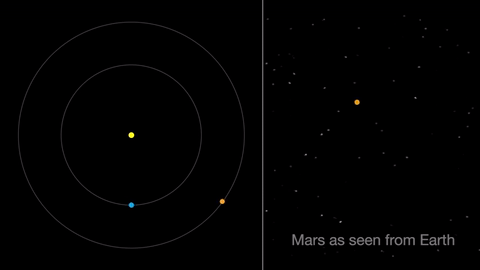
Retrograde motion happens as Earth catches up to Mars, causing Mars to appear slow to slow its eastward motion against the stars. After a few days, when Earth has overtaken Mars, the Red Planet seems to move westward. Eventually, Earth moves far enough around its orbit that Mars appears to be moving eastward again.
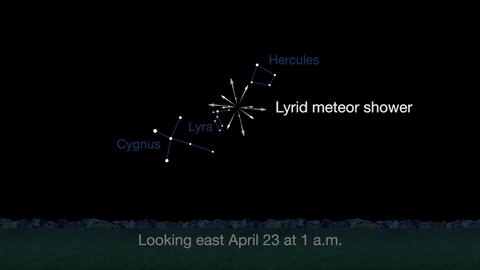
April features one meteor shower, the Lyrids. This year the Lyrids are marred by the full moon. The best time to view will be just before dawn on April 23, when the constellation Lyra is overhead and the moon will be near to setting.
With all of these great things to spot in the sky this month, be sure to get outside and look up!
Make sure to follow us on Tumblr for your regular dose of space: http://nasa.tumblr.com
(via https://www.youtube.com/watch?v=HU5kpIQ09Iw)
Elementary GLOBE is designed to introduce K-4 students to the study of Earth System Science. The complete instructional unit includes:
Science-based storybooks designed to introduce students to key concepts in water, soil, clouds, seasons, aerosols, and Earth system studies.
Classroom learning activities complementing the science content covered in each storybook that are designed to further engage students in GLOBE's 5 investigation areas.
(via https://www.youtube.com/watch?v=QMs7sWGm9q0)

Designing a NASA mission using the engineering design process is just part of a day's work for educators @nasajohnson attending our #nasamei2017 (at NASA - Johnson Space Center in Houston, TX)
Solar System: Things to Know This Week
Our solar system is a jewel box filled with a glittering variety of beautiful worlds–and not all of them are planets. This week, we present our solar system’s most marvelous moons.

1. Weird Weather: Titan
Saturn’s hazy moon Titan is larger than Mercury, but its size is not the only way it’s like a planet. Titan has a thick atmosphere, complete with its own “water cycle” – except that it’s way too cold on Titan for liquid water. Instead, rains of liquid hydrocarbons like ethane and methane fall onto icy mountains, run into rivers, and gather into great seas. Our Cassini spacecraft mapped the methane seas with radar, and its cameras even caught a glimpse of sunlight reflecting off the seas’ surface. Learn more about Titan: saturn.jpl.nasa.gov/science/titan/

2. Icy Giant: Ganymede
Jupiter’s moon Ganymede is the largest in the solar system. It’s bigger than Mercury and Pluto, and three-quarters the size of Mars. It’s also the only moon known to have its own magnetic field. Details: solarsystem.nasa.gov/planets/ganymede/indepth

3. Retrograde Rebel: Triton
Triton is Neptune’s largest moon, and the only one in the solar system to orbit in the opposite direction of its planet’s rotation, a retrograde orbit. It may have been captured from the Kuiper Belt, where Pluto orbits. Despite the frigid temperatures there, Triton has cryovolcanic activity – frozen nitrogen sometimes sublimates directly to gas and erupts from geysers on the surface. More on Triton: solarsystem.nasa.gov/planets/triton/indepth

4. Cold Faithful: Enceladus
The most famous geysers in our solar system (outside of those on Earth) belong to Saturn’s moon Enceladus. It’s a small, icy body, but Cassini revealed this world to be one of the solar system’s most scientifically interesting destinations. Geyser-like jets spew water vapor and ice particles from an underground ocean beneath the icy crust of Enceladus. With its global ocean, unique chemistry and internal heat, Enceladus has become a promising lead in our search for worlds where life could exist. Get the details: saturn.jpl.nasa.gov/science/enceladus/

5. Volcano World: Io
Jupiter’s moon Io is subjected to tremendous gravitational forces that cause its surface to bulge up and down by as much as 330 feet (100 m). The result? Io is the most volcanically active body in the Solar System, with hundreds of volcanoes, some erupting lava fountains dozens of miles high. More on Io’s volcanoes: solarsystem.nasa.gov/planets/io/indepth

6. Yin and Yang Moon: Iapetus
When Giovanni Cassini discovered Iapetus in 1671, he observed that one side of this moon of Saturn was bright and the other dark. He noted that he could only see Iapetus on the west side of Saturn, and correctly concluded that Iapetus had one side much darker than the other side. Why? Three centuries later, the Cassini spacecraft solved the puzzle. Dark, reddish dust in Iapetus’s orbital path is swept up and lands on the leading face of the moon. The dark areas absorb energy and become warmer, while uncontaminated areas remain cooler. Learn more: saturn.jpl.nasa.gov/news/2892/cassini-10-years-at-saturn-top-10-discoveries/#nine

7. A Double World: Charon and Pluto
At half the size of Pluto, Charon is the largest of Pluto’s moons and the largest known satellite relative to its parent body. The moon is so big compared to Pluto that Pluto and Charon are sometimes referred to as a double planet system. Charon’s orbit around Pluto takes 6.4 Earth days, and one Pluto rotation (a Pluto day) takes 6.4 Earth days. So from Pluto’s point of view Charon neither rises nor sets, but hovers over the same spot on Pluto’s surface, and the same side of Charon always faces Pluto. Get the details: www.nasa.gov/feature/pluto-and-charon-new-horizons-dynamic-duo

8. “Death Star” Moon: Mimas
Saturn’s moon Mimas has one feature that draws more attention than any other: the crater Herschel, which formed in an impact that nearly shattered the little world. Herschel gives Mimas a distinctive look that prompts an oft-repeated joke. But, yes, it’s a moon. More: olarsystem.nasa.gov/planets/mimas

9. Don’t Be Afraid, It’s Just Phobos
In mythology, Mars is a the god of war, so it’s fitting that its two small moons are called Phobos, “fear,” and Deimos, “terror.” Our Mars Reconnaissance Orbiter caught this look at Phobos, which is roughly 17 miles (27 km) wide. In recent years, NASA scientists have come to think that Phobos will be torn apart by its host planet’s gravity. Details: www.nasa.gov/feature/goddard/phobos-is-falling-apart
Learn more about Phobos: solarsystem.nasa.gov/planets/phobos/indepth

10. The Moon We Know Best
Although decades have passed since astronauts last set foot on its surface, Earth’s moon is far from abandoned. Several robotic missions have continued the exploration. For example, this stunning view of the moon’s famous Tycho crater was captured by our Lunar Reconnaissance Orbiter, which continues to map the surface in fine detail today. More: www.lroc.asu.edu/posts/902
Discover more lists of 10 things to know about our solar system HERE.
Make sure to follow us on Tumblr for your regular dose of space: http://nasa.tumblr.com